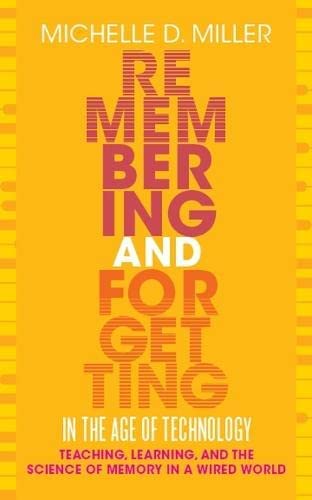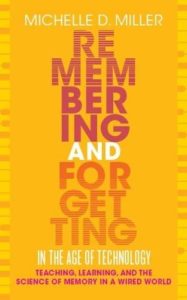Because of Covid, our students have fallen behind. How can we help them “catch up”?
As I argued back in June, Bruce Willis might (or might not) have helpful answers to that question.
In the third Die Hard movie, Brue Willis and his unexpected partner Samuel L. Jackson need to get to Wall Street a hurry. They commandeer a cab.
An experienced cab driver, Jackson suggests taking 9th Avenue south, but Willis insists on going through Central Park.
It turns out: he doesn’t mean taking the road that runs through the Central Park, but driving through the park itself — across crowded lawns, through busy playgrounds, past famous fountains, down winding bike-paths.
His desperate short-cut helps the team catch up.
In education these days, it seems that we need our very own Bruce Willis.
Because of Covid, our students are WAY BEHIND.
5th graders don’t know as much math as they used to. 2nd graders can’t read as well as they once could. 9th graders have lost even more social skills than 9th graders usually lose.
Because our students know less and can do less, we teachers want to help them CATCH UP.
And so we ask: what’s the educational analogue to driving through the park? How can we — like Bruce and Samuel — help our students learn faster?
Like lots of folks, I’ve been thinking about that question for a while now. I’ve got bad news, and worse news; and I’ve got good news.
The Bad News
The Bruce Willis Method does not exist in education.
We can’t “drive through the park.” We can’t, in other words, help students “learn the same amount, only faster.”
Here’s why I say so:
If we knew how to teach any faster, we would have been doing so already.
Seriously. Do you know any teacher who says, “I could have covered this curriculum in 10 weeks. But what the heck, I’m going to drag it out and take 12 or 13”?
I don’t. And I suspect you don’t either.
We have always been helping our students learn as best we could. If we knew better ways, we would have been using them.
Of course Willis can get through the park faster; it was a MOVIE! Alas, we can’t follow his example.
I am, in fact, quite worried about all the talk of “catching up.” In my mind, it creates two clear dangers:
First Danger:
If we try to catch up, we’ll probably — in one way or another — try to speed up. We will, for instance, explore a topic in 2 weeks instead of 3 weeks. We will combine 3 units into 1.
However, the decision to speed up necessarily means that students spend less time thinking about a particular topic.
As Dan Willingham has taught us: “memory is the residue of thought.” If students spend less time thinking about a topic, they will learn less about it.
The result: they won’t catch up. Instead, they will be further behind.
In other words: such efforts to help students recover from Covid learning muddle will — paradoxically — hinder their learning.
Second Danger:
If we believe that “catching up” is a realistic short-term possibility, we open ourselves up to inspiring-but-unfounded claims.
People who don’t work in schools will tell us that “you can’t solve problems with the same thinking that created those problems in the first place.”
Their claims might include words & phrases like “transformational” or “thinking outside the box” or “new paradigm” or “disrupt.”
These claims will almost certainly come with products to buy: new technology here, new textbooks there, new mantras yon.
They will sound uplifting and exciting and tempting and plausible.
But…
… any “research-based” claims will almost certainly extrapolate substantially beyond the research’s actual findings;
… these ideas won’t have been tested at scale in a realistic setting;
… such claims will defy core knowledge about cognitive architecture. (No, students can’t overcome working memory limitations simply because “they can look up everything on the internet.”)
In other words: because the goal (“catching up”) is so tempting, we might forget to be appropriately skeptical of inspiring claims (“your students can catch up if you only do THIS THING!”).
Now is the time to be more skeptical, not less skeptical, of dramatic claims.
The Good News
Despite all this gloomy news, I do think we have a very sensible and realistic option right in front of us.
I propose three steps for the beginning of the next school year.
Step 1: determine what our students already know.
In previous years, I could reasonably predict that my students know this much grammar and this much about Shakespeare and this much about analyzing literature.
Well, they just don’t anymore. I need to start next year by finding out what they really do know. (Hint: it will almost certainly be less — maybe dramatically less — than they did in the past.)
Step 2: plan a realistic curriculum building from that foundation.
If we meet our students where they are, they are much likelier to learn the new ideas and procedures we teach them.
In fact, they’re also likelier to strengthen and consolidate the foundation on which they’re building.
Yes, I might feel like my students are “behind.” But they’re behind an abstract standard.
As long as they’re making good progress in learning new ideas, facts, and procedures, they’re doing exactly the right cognitive work. They won’t catch up this year.
But if they make steady progress for several years, they’ll be well back on track.
Step 3: draw on the lessons of cognitive science.
In the paragraphs above, I’ve been highly skeptical of uplifting, simplistic quick-fix claims. (“If we revolutionize education with X, our students will learn calculus in 6th grade!”)
At the same time, I do think that teachers can make steady and coherent improvements in our work. When we understand the mental processes that lead to long-term memory formation, we can teach more effectively.
We should study…
… working memory function: the core mental bottleneck that both allows and impedes learning;
… the importance of desirable difficulties — spacing, interleaving, retrieval practice — in forming long-term memories;
… the sub-components of attention that add up to concentration and understanding;
… a realistic framework for understanding student motivation.
And so forth.
Understanding these topics will not “revolutionize education overnight.”
However, teachers who design lessons and plan syllabi with these insights in mind can in fact help their students consolidate ideas more effectively.
In other words: don’t follow Bruce Willis through the park.
Instead, we should learn how learning takes place in the brain. When our teaching is guided by that knowledge, our students have the best long-term chance of getting back on track.
![The Bruce Willis Method: Catching Up Post-Covid [Reposted]](https://www.learningandthebrain.com/blog/wp-content/uploads/2022/06/Boy-at-Track-Start.jpg)



![Do Classroom Decorations Distract Students? A Story in 4 Parts… [Reposted]](https://www.learningandthebrain.com/blog/wp-content/uploads/2022/03/Busy-Classroom.jpg)




![Is “Cell Phone Addiction” Really a Thing? [Reposted]](https://www.learningandthebrain.com/blog/wp-content/uploads/2021/11/Black-College-Student-Holding-Phone.jpg)






